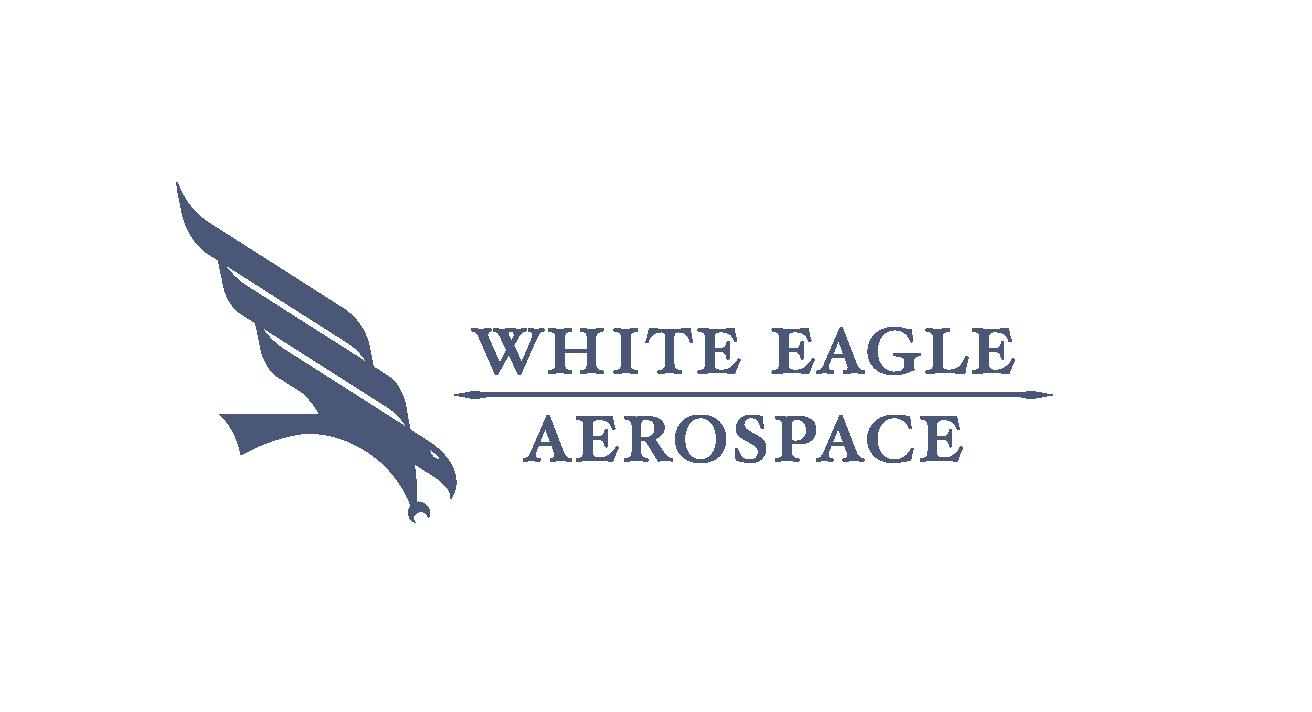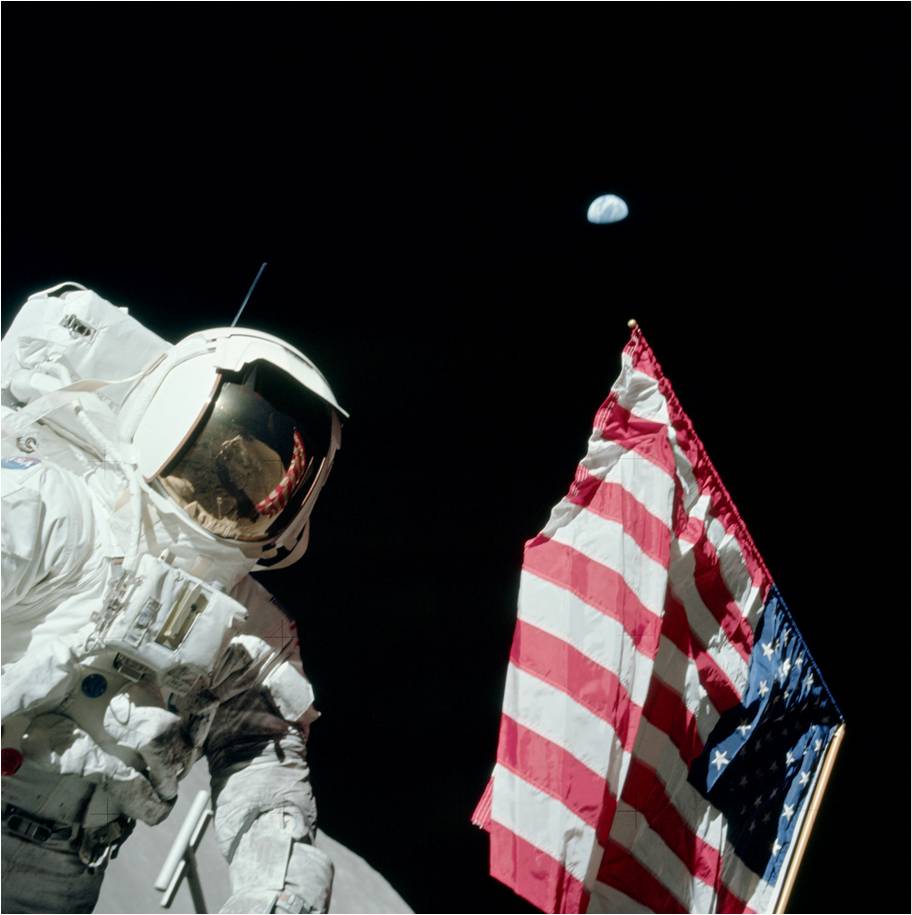
Thirty-eight years ago this month, NASA successfully conducted the sixth lunar landing mission of the Apollo Program. Known as Apollo 17, the flight marked the last time that men from the planet Earth explored the surface of the Moon.
Apollo 17 was launched from LC-39A at Cape Canaveral, Florida on Thursday, 07 December 1972. With a lift-off time of 05:33:00 UTC, Apollo 17 was the only night launch of the Apollo Program. Those who witnessed the event say that night turned into day as the incandescent exhaust plumes of the Saturn V’s quintet of F-1 engines lit up the sky around the Cape.
The target for Apollo 17 was the Taurus-Littrow valley in the lunar highlands. Located on the southeastern edge of Mare Serenitatis, the landing site was of particular interest to lunar scientists because of the unique geologic features and volcanic materials resident within the valley. Planned stay time on the lunar surface was three days.
The Apollo 17 crew consisted of Commander Eugene A. Cernan, Command Module Pilot (CMP) Ronald E. Evans and Lunar Module Pilot (LMP) Harrison H. Schmitt. While this was Cernan’s third space mission, both Evans and Schmitt were space rookies. Astronaut Schmitt was a professional geologist and the only true scientist to explore the surface of the Moon.
With Evans circling the Moon solo in the Command Module America, Cernan and Schmitt successfully landed their Lunar Module Challenger at 19:54:57 UTC on Monday, 11 December 1972. Their lunar stay lasted more than three days. The astronauts used the Lunar Rover for transport over the lunar surface as they conducted a trio of exploratory excursions that totaled more than 22 hours.
Cernan and Schmitt collected nearly 244 pounds of lunar geologic materials while exploring Taurus-Littrow. As on previous missions, the Apollo 17 crew deployed a sophisticated set of scientific instruments used to investigate the lunar surface environment. Indeed, the Apollo Lunar Surface Experiments Package (ALSEP) deployed during during lunar landing missions measured and transmitted vital lunar environmental data back to Earth through September 1977 when the data acquisition effort was officially terminated.
The Apollo 17 landing party departed the Moon at 22:54:37 UTC on Thursday, 14 December 1972. In a little over two hours, Challenger and America were docked. Following crew and cargo transfer to America, Challenger was later intentionally deorbited and impacted the lunar surface. The Apollo 17 crew then remained in lunar orbit for almost two more days to make additional measurements of the lunar environment.
At 23:35:09 UTC on Saturday, 16 December 1972, Apollo 17 blasted out of lunar orbit and headed home. Later, CMP Ron Evans performed a trans-Earth spacewalk to retrieve film from Apollo 17 ‘s SIM Bay camera. Evans’ brave spacewalk occurred on Sunday, 17 December 1972 (69th anniversary of the Wright Brothers first powered flight) and lasted 65 minutes and 44 seconds.
Apollo 17 splashdown occurred near America Samoa in the Pacific Ocean at 19:24:59 UTC on Tuesday, 19 December 1972. America and her crew were subsequently recovered by the USS Ticonderoga.
Apollo 17 set a number of spaceflight records including: longest manned lunar landing flight (301 hours, 51 minutes, 59 seconds); longest lunar stay time (74 hours, 59 minutes, 40 seconds); total lunar surface extravehicular activity time (22 hours, 3 minutes, 57 seconds); largest lunar sample return (243.7 pounds), and longest time in lunar orbit (147 hours, 43 minutes, 37 seconds).
Apollo 17 successfully concluded America’s Apollo Lunar Landing Program. Of a sudden it seemed, America’s — and the world’s — greatest adventure was over. However, the anticipation was that the United States would return in the not-too-distant future. Indeed, Gene Cernan, the last man to walk on the Moon, spoke the following words from the surface:
“As I take man’s last step from the surface, back home for some time to come — but we believe not too long into the future — I’d like to just [say] what I believe history will record — that America’s challenge of today has forged man’s destiny of tomorrow. And, as we leave the Moon at Taurus-Littrow, we leave as we came and, God willing, as we shall return, with peace and hope for all mankind. Godspeed the crew of Apollo 17.”
It has now been 38 years since the Commander of Apollo 17 spoke those stirring words from the valley of Taurus-Littrow. Gene Cernan and most space experts of his day figured we would surely be back by now. Certainly in the 20th century. Yet, there has been no return. Moreover, there is no formal plan or funded program in the 21st century to do so. And so, the historical record continues to list the name of Eugene A. Cernan as the last man to walk on the Moon.
Okay America, here’s some questions for you. When will we go back to the Moon? By extension, how about Mars and beyond? Are our greatest space achievements behind us or is the best yet to come? Are we a nation of used-to-be’s or are we that bastion of freedom where even the impossible is achievable? Does it matter? Do you even care? You choose.
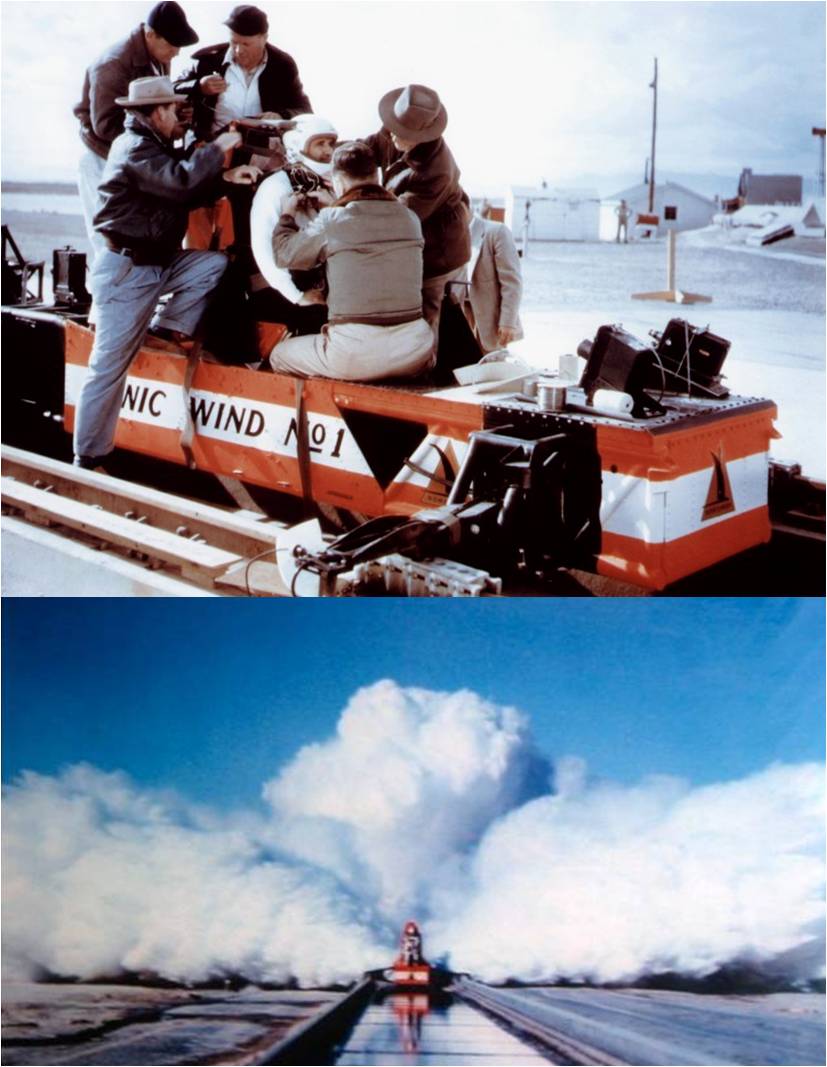
Fifty-six years ago this month, USAF Lieutenant Colonel John Paul Stapp set a record for human G-tolerance when his Sonic Wind #1 rocket-powered test sled decelerated from 632 mph to a full stop in roughly 1.4 seconds. In so doing, Stapp endured a deceleration load equal to 46.2 times his weight.
The period immediately following World War II marked the beginning of a steady rise in the speed and altitude capabilities of military aircraft. These performance increases subjected aircrew to wider ranges of flight loads and physical stresses. Manifold aeromedical issues and crew safety concerns arose; particularly in the area of emergency escape from a stricken aircraft.
Abandoning an aircraft in flight under emergency conditions and surviving the experience has always been a sporty proposition. Ejection forces, wind blast, body limb flailing, parachute opening shock levels, and the like make it so. Add to this list the effects of atmospheric temperature, pressure and oxygen concentration, and one starts to get an appreciation for the severity of the situation.
John Paul Stapp was a USAF physician who had an abiding interest in the aeromedical aspects of emergency escape. He knew that too many pilots were dying in situations that could have been survivable if proper equipment and procedures were available. Stapp dedicated himself to improving the chances of aircrew survival.
Stapp was a pioneer in scientifically investigating the effects of acceleration and deceleration on the human body. In March of 1947, he began a series of deceleration tests using a 2,000-foot sled track at Edwards Air Force Base. A rocket-powered test sled named the Gee Whiz carried test subjects down the track and brought them to a sudden halt to produce specific deceleration levels.
Initially, Stapp’s test subjects were anthropomorphic dummies and primates. However, he had always held to the belief that the best test subject would be a human. Better yet, a human who possessed extensive medical knowledge. Stapp selected himself for the assignment.
Stapp took his first ride down the Edwards sled test track on Wednesday, 10 December 1947. By May of 1948, he had riden the Gee Whiz a total of 16 times. One run resulted in a deceleration of 35-G’s. This meant that Stapp briefly experienced a force equal to 35 times his normal body weight during deceleration. In so doing, he pointedly dispelled the prevailing notion that a human being could not survive a deceleration level beyond 18-G’s.
Riding the sled was a form of physical abuse. Among numerous injuries, Stapp received several concussions, broke the same wrist twice, cracked ribs, and sustained retinal hemorrhages for his time on the track. All in an effort to find ways to preserve the lives of aircrew. Stapp, other human volunteers and chimpanzees continued sled testing on the Edwards track until 1953.
Stapp transferred to the Aeromedical Field Lab at Holloman Air Force Base, New Mexico in early 1953. He now had a longer track (3,550 feet) and a faster sled (Sonic Wind #1) with which to expand his deceleration research. The system was checked-out using a new crash test dummy and then a live primate. Stapp made the first human run on the Holloman track.
John Paul Stapp completed his 29th and final experimental sled test run on Friday, 10 December 1954. Propelled by a set of 9 rocket motors producing 70,000 pounds of thrust, the Sonic Wind #1 hit a peak velocity of 632 mph (Mach 0.9 at the test site altitude). Stapp endured a maximum acceleration of 20 G’s and then an incredible peak deceleration of 46.2-G’s during 1.4 seconds of slow-down. At that moment, he weighed 6,800 pounds.
Stapp took a severe pounding during his record ride. There were the “usual” body bruises, lacerations and harness burns. However, the worse effects involved his eyes. Both hemorrhaged and were completely filled with blood. Stapp indicated that all he could see was a watery salmon-colored fluid. Happily, his vision would return to quasi-normal by the next day. Stapp sported a pair of world-class shiners as peculiar momentos of his extreme deceleration experience.
Characteristically, Stapp had plans to go faster and endure more G’s. Indeed, the proposed Sonic Wind #2 test sled would be capable of driving him in excess of 1,000 mph and decelerating at more than 80 G’s. Such was not to occur as USAF would not allow Stapp to risk all again as a sled test subject.
John Paul Stapp’s legendary work produced enormous dividends in helping develop equipment, techniques and procedures that have saved the lives of countless aircrew. But the benefits of his research have gone well beyond that. Today, automobile safety standards are based in large measure on Stapp’s pioneering deceleration work. His legacy continues in other ways as well. Indeed, the 54th Stapp Car Crash Conference was held in November of this year.
John Paul Stapp, USAF officer, physician, sled test subject, was a man of uncommon valor and a bonifide hero in the truest sense of that over-used word. He willingly risked his life numerous times so that others might live. A man can do no more than that for his friends. On Wednesday, 13 November 1999, this man among men passed away peacefully in his sleep at age 89.
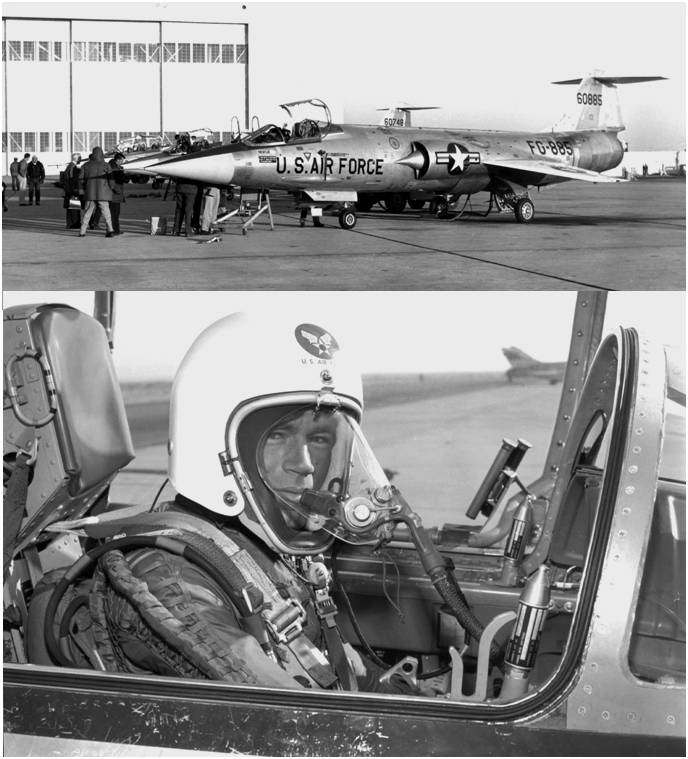
Fifty-one years ago this week, USAF Captain Joe B. Jordan zoomed a modified USAF/Lockheed F-104C Starfighter to a world altitude record of 103,395.5 feet above mean sea level. The flight originated from and recovered to the Air Force Flight Test Center (AFFTC) at Edwards Air Force Base, California.
On Tuesday, 14 July 1959, the USSR established a world altitude record for turbojet-powered aircraft when Soviet test pilot Vladimir S. Ilyushin zoomed the Sukhoi T-43-1 (a prototype of the Su-9) to an absolute altitude of 94,661 feet. By year’s end, the Soviet achievement would be topped by several American aircraft.
FAI rules stipulate that an existing absolute altitude record be surpassed by at least 3 percent for a new mark to be established. In the case of the Soviet’s 1959 altitude record, this meant that an altitude of at least 97,501 feet would need to be achieved in a record attempt.
On Sunday, 06 December 1959, USN Commander Lawrence E. Flint wrested the months-old absolute altitude record from the Soviets by zooming to 98,561 feet. Flint piloted the second USN/McDonnell Douglas YF4H-1 (F4 Phantom II prototype) in accomplishing the feat. In a show of inter-service cooperation, the record flight was made from the AFFTC at Edwards Air Force Base.
Meanwhile, USAF was feverishly working on its own record attempt. The aircraft of choice was the Lockheed F-104C Starfighter. However, with the record now held by the Navy, the Starfighter would have to achieve an absolute altitude of at least 101,518 feet to set a new mark. (Per the FAI 3 percent rule.)
On Tuesday, 24 November 1959, the AFFTC accepted delivery of the record attempt aircraft, F-104C (S/N 56-0885), from the Air Force Special Weapons Center at Kirtland AFB in New Mexico. This aircraft was configured with a J79-GE-7 turbojet capable of generating nearly 18,000 pounds of sea level thrust in afterburner.
Modifications were made to the J79 to maximize the aircraft’s zoom kinematic performance. The primary enhancements included increasing afterburner fuel flow rate by 10 percent and maximum RPM from 100 to 103.5 percent. Top reset RPM was rated at 104.5 percent. Both the ‘A’ and ‘B’ engine flow bypass flaps were operated in the open position as well. These changes provided for increased thrust and stall margin.
An additional engine mod involved reducing the minimum engine fuel flow rate from 500 to 250 pounds per hour. Doing so increased the altitude at which the engine needed to be shut down to prevent overspeed or over-temperature conditions. Another change included increasing the maximum allowable compressor face temperature from 250 F to 390 F.
The F-104C external airframe was modified for the maximum altitude mission as well. The compression cones were lengthened on the bifurcated inlets to allow optimal pressure recovery at the higher Mach number expected during the record attempt. High Mach number directional stability was improved by swapping out the F-104C empannage with the larger F-104B tail assembly.
USAF Captain Joe B. Jordan was assigned as the altitude record attempt Project Pilot. USAF 1st Lt and future AFFTC icon Johnny G. Armstrong was assigned as the Project Engineer. Following an 8-flight test series to shake out the bugs on the modified aircraft, the record attempt proper started on Thursday, 10 December 1959.
On Monday, 14 December 1959, F-104C (S/N 56-0885) broke the existing absolute altitude record for turbojet-powered aircraft on its 5th attempt. Jordan did so by accelerating the aircraft to Mach 2.36 at 39,600 feet. He then executed a 3.15-g pull to an inertial climb angle of 49.5 degrees. Jordan came out of afterburner at 70,000 feet and stop-cocked the J79 turbojet at 81,700 feet.
Roughly 105 seconds from initiation of the pull-up, Joe Jordan reached the top of the zoom. The official altitude achieved was 103,395.5 feet above mean sea level based on range radar and Askania camera tracking. True airspeed over the top was on the order of 455 knots. Jordan started the pull-up to level flight at 60,000 feet; completing the recovery at 25,000 feet. Landing was entirely uneventful.
Jordan’s piloting achievement in setting the new altitude record was truly remarkable. His conversion of kinetic energy to altitude (potential energy) during the zoom was extremely efficient; realizing only a 2.5 percent energy loss from pull-up to apex. Jordan also exhibited exceptional piloting skill in controlling the aircraft over the top of the zoom where the dynamic pressure was a mere 14 psf. He did so using aerodynamic controls only. The aircraft did not have a reaction control system ala the X-15.
Armstrong’s contributions to shattering the existing altitude record were equally substantial. Skillful flight planning and effective use of available resources (including time available for the record attempt) were pivotal to mission success. Armstrong significantly helped maximize aircraft zoom performance through proper selection of pull-up flight conditions and intelligent use of accurate day-of-flight meteorological information.
For his skillful piloting efforts in setting the world absolute altitude record for turbojet-powered aircraft in December of 1959, Joe Jordan received the 1959 Harmon Trophy.
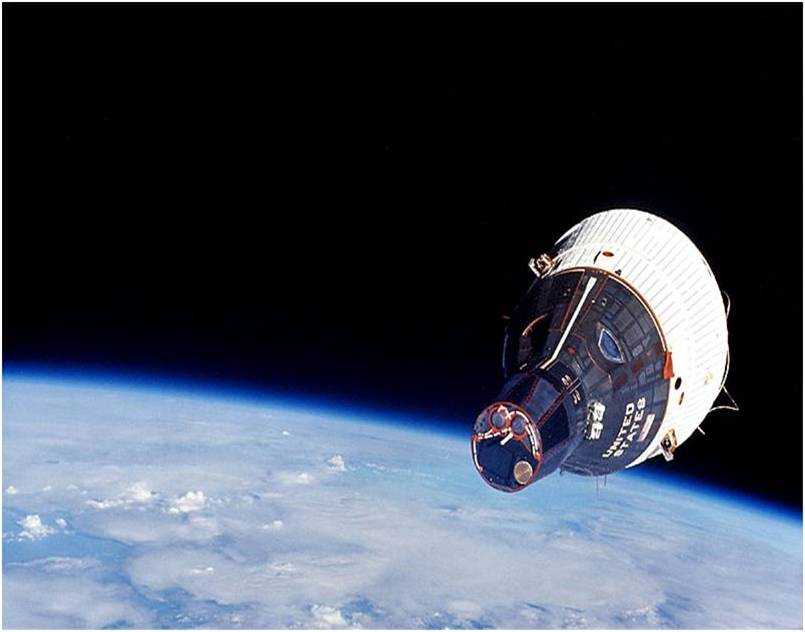
Forty-five years ago this month, Gemini 7 set a new record for long-duration manned spaceflight. The official lift-off-to-splashdown flight duration was 330 hours, 35 minutes and 1 second.
Project Gemini was the critical bridge between America’s fledging manned spaceflight effort – Project Mercury – and the bold push to land men on the Moon – Project Apollo. While the events and importance of this program have faded somewhat with the passage of time, there would have been no manned lunar landing in the decade of the 1960’s without Project Gemini.
On Thursday, 25 May 1961, President John F. Kennedy addressed a special session of the U.S. Congress on the topic of “Urgent National Needs”. Near the end of his prepared remarks, President Kennedy proposed that the United States “should commit itself to achieving the goal, before this decade is out, of landing a man on the moon and returning him safely to the earth.”
At the time of the President’s clarion call to go to the Moon, the United States had accrued a total of 15 minutes of manned spaceflight experience. That quarter hour of spacefaring activity had come just 20 days previous. Indeed, Alan B. Shephard became the first American to be launched into space when he rode his Freedom 7 Mercury spacecraft on a sub-orbital trajectory down the Eastern Test Range on Tuesday, 05 May 1961.
America responded enthusiastically to the manned lunar landing goal. However, no one really knew exactly how to go about it! After considering several versions of direct ascent from the Earth to the Moon, NASA ultimately decided to use a method proposed by engineer John C. Houbolt known as Lunar Orbit Rendezvous (LOR). As a result, NASA would have to invent and master the techniques of orbital rendezvous.
Project Gemini provided the technology and flight experience required for a manned lunar landing and return. In the 20 months between March of 1965 and November of 1966, a total of 10 two-man Gemini missions were flown. During that time, the United States learned to navigate, rendezvous and dock in space, fly for long durations and perform extra-vehicular activities.
The primary purpose of Gemini 7 was to conduct a 14-day orbital mission. This was important since the longest anticipated Apollo mission to the Moon and back would be about the same length of time. Gemini 7 was flown to show that men and spacecraft could indeed function in space for the required period. A secondary goal of Gemini 7 was to serve as the target for Gemini 6 in achieving the world’s first rendezvous between two manned spacecraft.
Gemini-Titan (GT-7) lifted-off from Cape Canaveral’s LC-19 at 19:30:03 UTC on Saturday, 04 December 1965. The Gemini 7 flight crew consisted of Commander Frank F. Borman II and Pilot James A. Lovell, Jr. They were successfully inserted into a 177-nm x 87-nm low-earth orbit. This initial orbit was later circularized to 162-nm.
Borman and Lovell spent the first 10-days of their mission conducting a variety of space experiments. They wore special lightweight spacesuits that were supposed to improve confort level for their long stay in space. However, these suits were not all that comfortable and by their second week in space, the astronauts were flying in just their long-johns.
On their 11th day in space, the Gemini 7 crew had visitors. Indeed, Gemini 6 was launched into Earth orbit from Cape Canaveral and subsequently executed the first rendezvous in space with Gemini 7 on Wednesday, 15 December 1965. Gemini 6, with Commander Walter M. Schirra, Jr. and Pilot Thomas P. Stafford on board, ultimately maneuvered to within 1 foot of the Gemini 7 spacecraft.
While Gemini 6 returned to Earth within 24 hours of launch, Gemini 7 and her weary crew soldiered on. The monotony was brutal. Borman and Lovell had conducted all of their planned space experiments. They had to drift through space to conserve fuel. They couldn’t sleep because they weren’t tired. Borman later indicated that those last 3 days on board Gemini 7 were some of the toughest of his life.
On the 14th day of flight, Saturday, 18 December 1965, Borman and Lovell successfully returned to Earth. Reentry was entirely nominal. Splashdown occurred at 14:05:04 UTC in the Atlantic Ocean roughly 400 miles east of Nassau in The Bahamas. Crew and spacecraft were recovered by the USS Wasp.
Frank Borman and Jim Lovell had orbited the Earth 206 times during their 14-day mission. Each crew member was tired and a little unsteady as he walked the flight deck of the USS Wasp. However, each man quickly recovered his native strength and vitality.
The 14 days that the Gemini 7 crew spent in space were physically and emotionally demanding. Life within the cramped confines of their little spacecraft was akin to two guys living inside a telephone booth for two weeks. Notwithstanding the challenges of that spartan existence, the Gemini 7 crew did their job. Gemini 7 was a resounding success. More, Project Gemini had achieved another key milestone. The Moon seemed a bit closer.
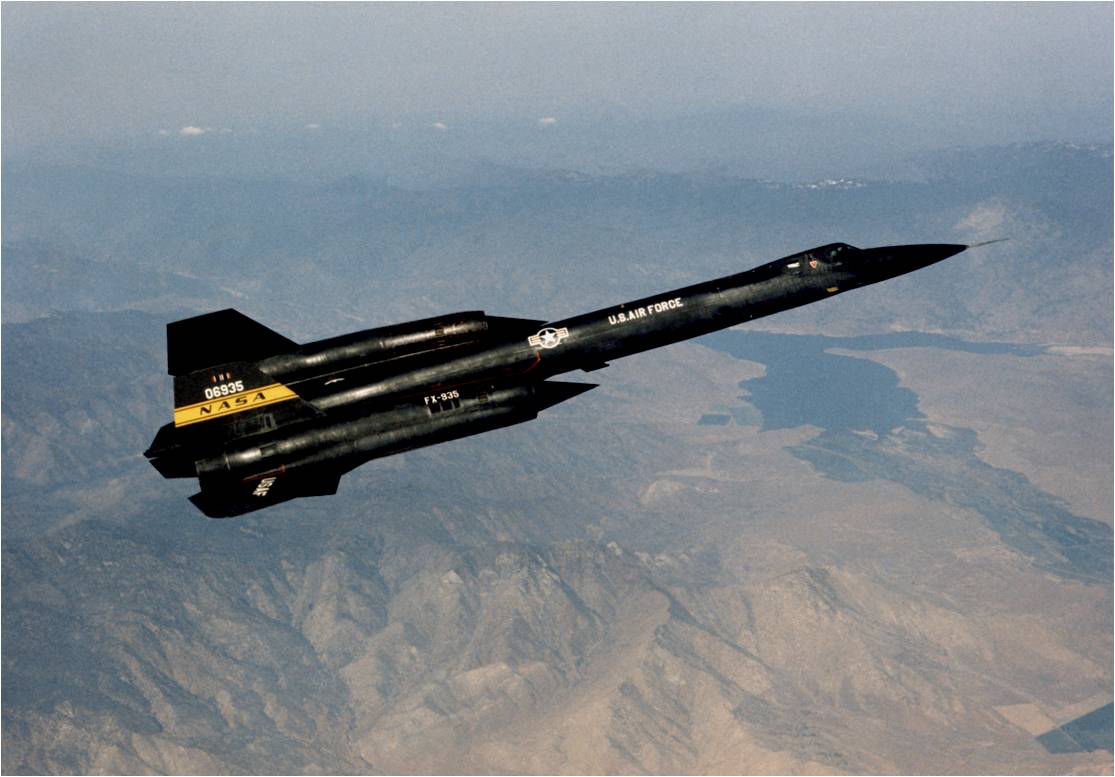
Thirty-one years ago this month, the 2nd and only surviving USAF/Lockheed YF-12A completed its final NASA flight research mission. The flight brought to a close the 10-year period within which the YF-12A was employed as a NASA high-speed flight research platform.
The YF-12A was the interceptor variant of the vaunted Lockheed A-12 Mach 3+ aircraft. Armed with a quartet of Hughes AIM-47A air-to-air missiles, the YF-12A’s mission would be to intercept and destroy incoming Soviet bombers. Lockheed proposed the A-12 variant as a cost-effective replacement for the defunct North American XF-108 Rapier.
The YF-12A differed from the A-12 in that a second crew station was added for the AIM-47A Weapons Systems Officer (WSO). The WSO operated the powerful Hughes AN/ASG-18 fire control radar which had a range on the order of 500 miles. The YF-12A’s forebody chines were truncated back of the axisymmetric nose to accommodate the radar system. Infrared (IR) sensors were installed on the leading edges of the shortened chines.
The Hughes AIM-47A missile measured 12.5 feet in length and 13.5 inches in diameter. Maximum range of the 800-pound missile was in excess of 100 miles. While the type’s intended maximum Mach number was 6, propulsion system development problems limited the demonstrated maximum Mach number to 4. About eighty (80) AIM-47A missiles were produced. Seven (7) of these rounds were test fired in flight. All but one (1) was successful.
Lockheed converted a trio of A-12 aircraft to the YF-12A configuration. The YF-12A aircraft were assigned serial numbers 60-6934 (Ship 1), 60-6935 (Ship 2) and 60-6936 (Ship 3). Ship 1 made the maiden YF-12A flight from Groom Lake, Nevada on Wednesday, 07 August 1963 with James D. Eastham at the controls.
Over the next eighteen (18) months, all three (3) YF-12A aircraft were put through performance flight testing at Groom Lake. Ship 3 set a number of speed and altitude records on Saturday, 01 May 1965. Included was the first air-breathing aircraft speed record in excess of 2,000 mph (2,070.102 mph) and a sustained altitude record of 80,257.86 feet above mean sea level.
USAF liked the YF-12A’s demonstrated performance capabilities. Thus, on Friday, 14 May 1965, the service ordered ninety-three (93) units of the production YF-12A aircraft known as the F-12B. Congress approved the order and allotted $90M to get production going. Unfortunately, United States Secretary of Defense Robert S. McNamara nixed the deal and cancelled the production of the F-12B.
Recall that McNamara also cancelled the XB-70A and X-20A Dyna-Soar and was the genius who championed the ill-posed TFX multiservice aircraft concept. He was also responsible for crafting the absurd rules of air war engagement that resulted in the inordinately large and unnecessary losses of American pilots in Viet Nam. McNamara further cemented his status as the Bane of the U.S. Air Force with the F-12B production wave-off.
Following the F-12B cancellation, YF-12A flight testing by USAF continued through 1969. One aircraft was lost along the way. On Thursday, 14 August 1966, Ship 1 was severely damaged in a landing incident at Edwards AFB and never flew again. Happily, the crew escaped injury.
In December of 1969, NASA initiated a flight research effort using YF-12A Ship 2 and Ship 3. Over the next ten (10) years a wealth of aerodynamic, aero heating, structural and propulsion flight research data were acquired using these unique high-speed assets. A great benefit in this regard was the type’s ability to sustain Mach 3+ flight conditions for periods up to 15 minutes per mission.
YF-12A Ship 3 was lost on Thursday, 24 June 1971 when an inflight fire started due to a failed fuel line in the right-hand J58 turbo-ramjet engine. The USAF crew of pilot Lt Col Ronald J. Layton and WSO Maj William A. Curtis attempted to recover the aircraft to Edwards AFB. However, the fire quickly spread and forced the crew to abandon the aircraft. They ejected safely and survived. Ship 3 was making its 67th flight of the NASA YF-12A flight research effort at the time of its demise.
Following Ship 3’s loss, Ship 2 flew the remainder of the NASA YF-12A high-speed flight research program. It registered a total of 146 missions in that capacity. On Wednesday, 07 November 1979, YF-12A Ship 2 departed Edwards AFB for its final destination; the USAF Musuem at Wright-Patterson AFB, Ohio. The USAF crew consisted of pilot Col James V. Sullivan and USAF Museum Director Richard Uppstrom as the guy in back (GIB).
As a footnote to the current story, the USAF attempted throughout the 1950’s and 1960’s to develop and produce a Mach 3 interceptor. Notable abortive attempts include the Republic XF-103 Thunder Warrior, the North American XF-108 Rapier and the Lockheed F-12B. Doubtless, there have been failed black-world attempts as well. The net result is that a Mach 3 interceptor has yet to grace the USAF production aircraft inventory.
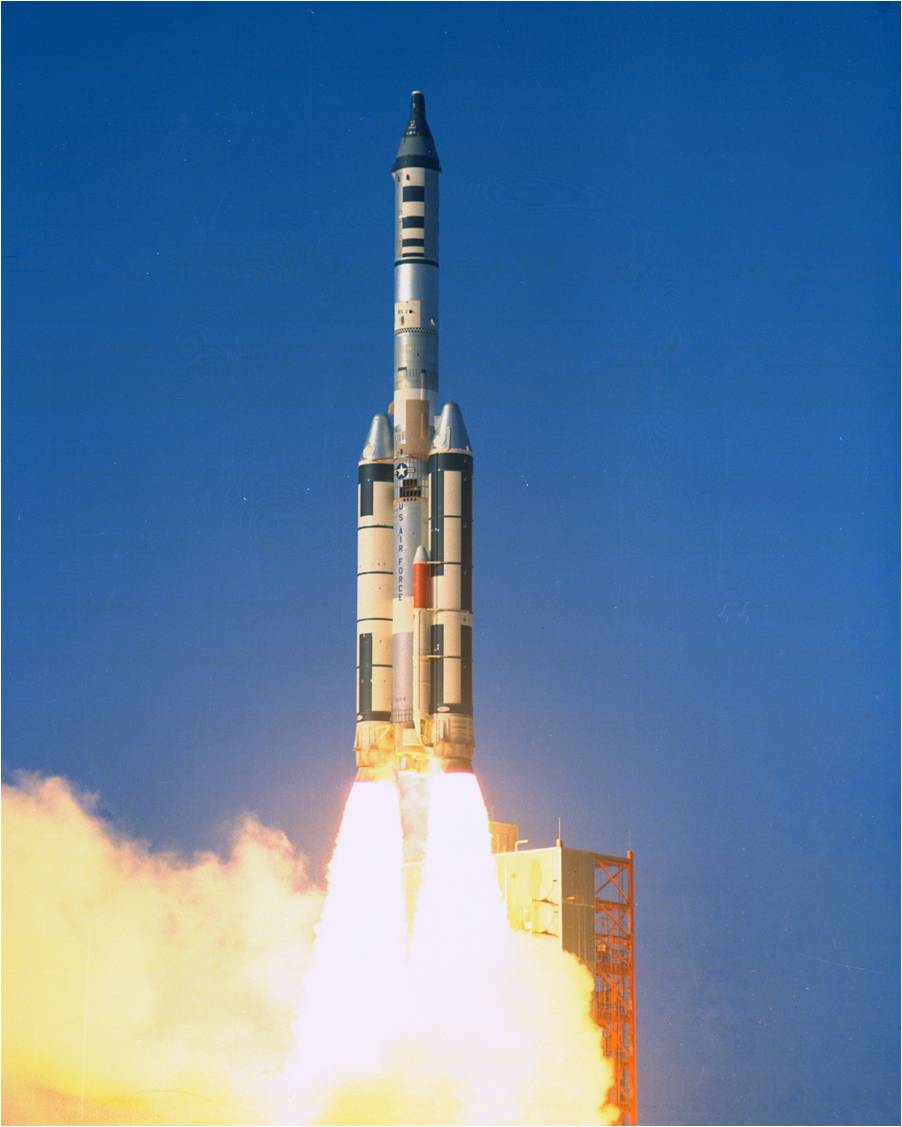
Forty-four years ago this month, a prototype of the USAF/Douglas Manned Orbiting Laboratory (MOL) was launched into Earth orbit. It was the first and only orbital flight test of the military space station.
The Manned Orbiting Laboratory (MOL) was a United States Air Force (USAF) program to develop a military reconnaissance space platform in the 1960’s. Using advanced optic, camera and radar systems, the MOL’s military astronaut crew would have the capability to determine the nature of other countries’ military spaceflight activities. Of particular interest were the clandestine military activities of the Soviet Union and Red China.
Operational MOL missions were to be launched from Vandenberg Air Force Base (VAFB) on the California coast. Doing so would provide a polar orbit capability. The corresponding high orbital inclination meant that the MOL would overfly much of the Earth’s surface during a 24-hour period.
The MOL Program was formally announced to the American public in December of 1963. The prime contractor was the Douglas Aircraft Company (DAC). The MOL was a large cylinder that measured 72-ft in length and 10-ft in diameter. The MOL consisted of 5 segments; main cabin, auxiliary cabin, experiment module, equipment module and a propulsion stage. MOL GTOW was approximately 32,000 lbs.
Fixed atop the MOL was a variant of the NASA Gemini spacecraft known as Gemini B. The crew would ride into and out of orbit in this vehicle. Access to the MOL was via a small door built into the Gemini’s heat shield. Once inside the MOL, the crew would doff their spacesuits and live in a “shirt-sleeve” environment. MOL was to use a two-gas atmosphere (70% oxygen-30% helium). A typical MOL mission was on the order of 30 days.
The Gemini-MOL combination was to be boosted into orbit by a Titan IIIC launch vehicle. First stage propulsion consisted of a pair of solid rocket boosters and a liquid sustainer core. Total lift-off thrust was about 1.84 million pounds. Second stage thrust was on the order of 100,000 pounds. The Titan IIIC third stage was the MOL transtage which produced 16,000 pounds of thrust.
Seventeen (17) MOL astronauts were selected in three (3) groups from the military services. MOL Group 1 (November 1965), MOL Group 2 (June 1966) and MOL Group 3 (June 1967) consisted of eight (8), five (5) and four (4) selectees, respectively. None of these men ever flew a MOL mission. However, seven (7) went on to fly on the Space Shuttle.
On Thursday, 03 November 1966, the one and only flight test of the MOL Program took place. Lift-off from Cape Canaveral’s LC-40 occurred at 13:50:42 UTC. A Titan II propellant tank served as the MOL test article. The previously-flown Gemini 2 spacecraft was employed as a representation of the Gemini B vehicle. The lone MOL prototype flight test was unmanned.
During Titan IIIC ascent, the Gemini 2 spacecraft separated and executed a sub-orbital reentry. The vehicle splashed-down in the South Atlantic Ocean near Ascension Island and was recovered by the USS La Salle. Post-flight inspection of the vehicle’s heat shield hatch revealed that it came through the reentry intact.
Meanwhile, the Titan IIIC launch vehicle successfully orbited the MOL prototype. In addition, a trio of satellites that had accompanied the MOL mock-up was successfully injected into Earth orbit. Thus, the first and only flight test in the history of the MOL Program was entirely successful.
Despite its game-changing mission, a successful flight test and its technical feasibility, the MOL Program never achieved operational status. It was cancelled by U.S. Secretary of Defense Melvin Laird in 1969. The cancellation came at a time when the country had invested heavily in the Apollo Program throughout the 1960’s, the Viet Nam War was escalating and unmanned satellite sensing technology was greatly improved.
The MOL cancellation was a real shot to the solar plexis of the American aerospace industry. Coupled with the contemporaneous ramp-down of the Apollo engineering and development effort, American aerospace would never again see the breath and depth of financial investment it enjoyed in the 1950’s and 1960’s.
The lone surviving physical artifact of the MOL Program was the twice-flown Gemini 2 spacecraft. It is on display today at the Air Force Space and Missile Museum at Cape Canaveral, Florida.
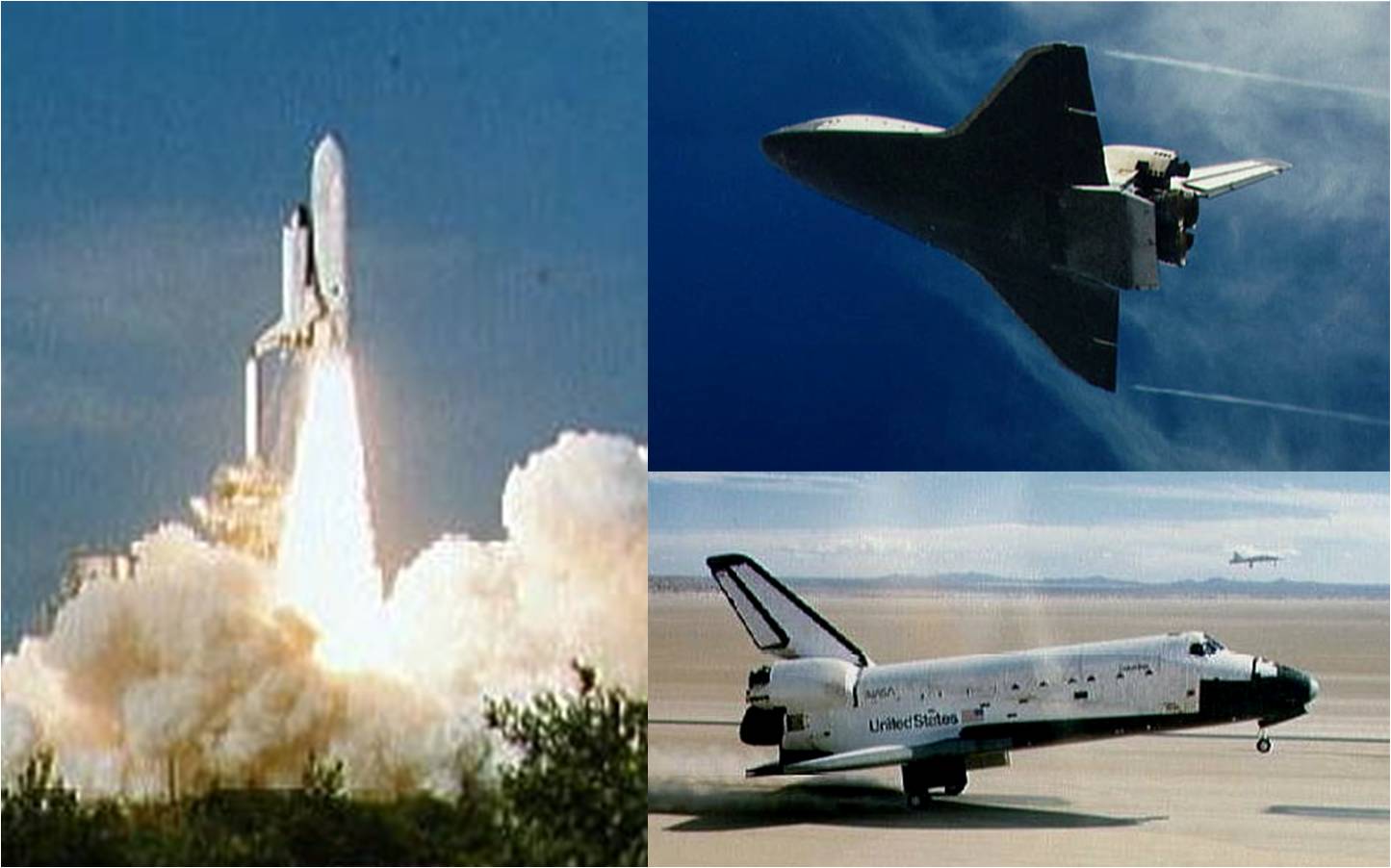
Twenty-nine years ago this month, the Space Shuttle Columbia completed the second mission of the Space Shuttle Program. Designated STS-2, the mission marked the first reuse of a space vehicle for manned orbital flight.
America’s early manned spacecraft – Mercury, Gemini and Apollo – were single-flight vehicles. That is, a new spacecraft was required for each space mission. This was appropriate for meeting the aims of the early space program which concentrated on getting America to the moon before the end of the 1960’s.
The concept of space vehicle reusability came into vogue with the introduction of the Space Transportation System (STS). The original goal of the STS was to provide frequent and routine access to space via a fleet of Space Shuttle vehicles. For the STS to achieve economic viability, this meant flying a Space Shuttle once every two weeks. History has shown that this projected flight rate was optimistic to say the least.
The Space Shuttle vehicle was ultimately configured as a 3-element system consisting of (1) a winged orbiter, (2) a pair of solid rocket boosters (SRB’s) and (3) an external tank (ET). Both the orbiter and the SRB’s were designed to be reusable. The ET would be the only disposable element of the system since higher costs would be incurred in the recovery and refurbishment of this piece of flight hardware than in simply using a new one for each flight.
The Space Shuttle was designed to haul large payloads; on the order of 60,000 and 50,00 lbs into and out of orbit, respectively. With a maximum landing weight of 230,000 lbs, the Space Shuttle Orbiter needed wings to generate the required aerodynamic lift force. Wings were needed to satisfy the Orbiter’s 1,100-nm entry cross range requirement as well.
Following the successful first flight (STS-1) of the Space Shuttle Columbia in April of 1981, preparations began immediately to ready the Orbiter for its equally monumental second flight. The STS-2 flight crew would consist of Commander Joe Henry Engle and Pilot Richard Harrison Truly. STS-2 would be the first orbital spaceflight for both men.
On Thursday, 12 November 1981, the Space Shuttle Columbia lifted-off at 15:09:59 UTC from Cape Canaveral’s LC-39A. Ascent flight was nominal and Columbia was placed into a 125-nm x 120-nm orbit. At this point, Columbia became the first manned spacecraft to achieve Earth-orbit twice. It was an extra special occasion for Richard Truly inasmuch as it was his 44th birthday.
Engle and Truly anticipated 5-days in orbit with their orbital steed. However, one of Columbia’s three fuel cells failed early-on and the mission was reduced to just over two days. Nonetheless, the crew achieved 90 percent of the mission’s goals. They even remained awake during a scheduled sleep period to exercise the new Canadian Remote Manipulator System (RMS).
On Saturday, 14 November 1981, Columbia and her crew successfully completed STS-2 by landing on Rogers Dry Lake at Edwards Air Force Base, California. Main gear touchdown occurred at 21:23:11 UTC. Joe Engle flew the entire reentry manually. He holds the distinction of being the only pilot to manually fly a lifting space vehicle all the way from orbit to landing. Engle completed a total of 29 Programmed Test Input (PTI) aerodynamic maneuvers in the process.
STS-2 was a monumental success. Columbia became the first space vehicle to be reused for manned orbital space operations. Other Orbiters would follow including Challenger, Atlantis, Discovery and Endeavor. As of this writing, 132 STS missions have been flown.
As a footnote, Joe Engle went on to command one more Space Shuttle mission in 1985 (STS-51I). He retired from the USAF in November of 1986. Richard Truly served as Commander of STS-8 in 1983. That mission featured the first night launch and landing of the Space Shuttle. Richard Truly also served as NASA Administrator from May of 1989 to May of 1992.
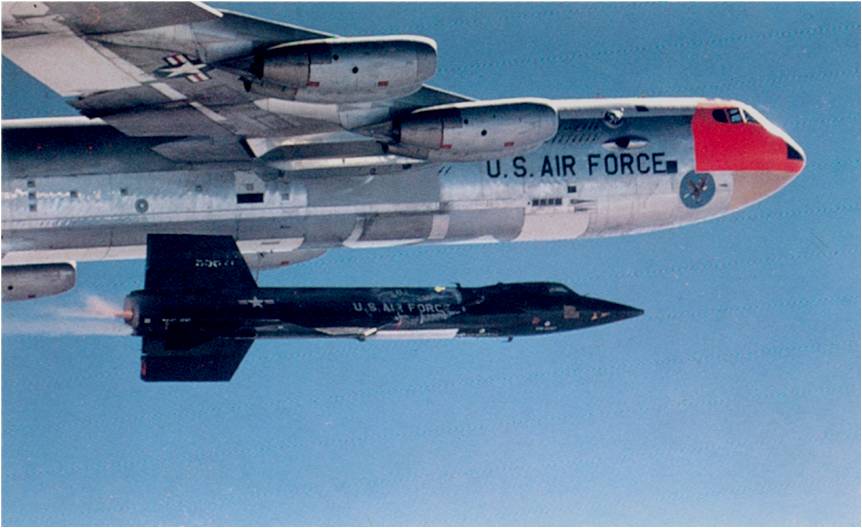
Forty-nine years ago this week, the USAF/NASA/North American X-15 became the first manned aircraft to exceed Mach 6. United States Air Force test pilot Major Robert M. White was at the controls of the legendary hypersonic flight research aircraft.
The North American X-15 was the first manned hypersonic aircraft. It was designed, engineered, constructed and first flown in the 1950’s. As originally conceived, the X-15 was designed to reach 4,000 mph (Mach 6) and 250,000 feet. Before its flight test career was over, the type would meet and exceed both performance goals.
North American built a trio of X-15 airframes; Ship No. 1 (S/N 56-6670), Ship No. 2 (56-6671) and Ship No. 3 (56-6672). The X-15 measured 50 feet in length, had a wing span of 22 feet and a GTOW of 33,000 lbs. Ship No. 2 would later be modified to the X-15A-2 enhanced performance configuration. The X-15A-2 had a length of 52.5 feet and a GTOW of around 56,000 lbs.
The Reaction Motors XLR-99 rocket engine powered the X-15. The small, but mighty XLR-99 generated 57,000 pounds of sea level thrust at full-throttle. It weighed only 910 pounds. The XLR-99 used anhydrous ammonia and LOX as propellants. Burn time varied between 83 seconds for the stock X-15 and about 150 seconds for the X-15A-2.
The X-15 was carried to drop conditions (typically Mach 0.8 at 42,000 feet) by a B-52 mothership. A pair of aircraft were used for this purpose; a B-52A (S/N 52-003) and a B-52B (S/N 52-008). Once dropped from the mothership, the X-15 pilot lit the XLR-99 to accelerate the aircraft. The X-15A-2 also carried a pair of drop tanks which provided propellants for a longer burn time than was possible with the stock X-15 flight.
The X-15 employed both aerodynamic and reaction flight controls. The latter were required to maintain vehicle attitude in space-equivalent flight. The X-15 pilot wore a full-pressure suit in consequence of the aircraft’s extreme altitude capability. The typical X-15 drop-to-landing flight duration was on the order of 10 minutes. All X-15 landings were performed deadstick.
On Thursday, 09 November 1961, USAF Major Robert M. White would fly his 11th X-15 mission. The X-15 and White had already become respectively the first aircraft and pilot to hit Mach 4 and Mach 5. On this particular day, White would be at the controls of X-15 Ship No. 2. The planned maximum Mach number for the mission was Mach 6.
At 17:57:17 UTC of the aforementioned day, X-15 Ship No. 2 was launched from the B-52B mothership commanded by USAF Captain Jack Allavie. Bob White lit the XLR-99 and pulled into a steep climb. Mid-way through the climb, White pushed-over and ultimately leveled-off at 101,600 feet. XLR-99 burnout occurred 83 seconds after ignition. At this point, White was traveling at 4,093 mph or Mach 6.04.
On this record flight, the X-15 was exposed to the most severe aerodynamic heating environment it had experienced to date. Decelerating through Mach 2.7, the right window pane on the X-15’s canopy shattered due to thermal stress. The glass pane remained intact, but White could not see out of it. Fortunately, he could see out of the left pane and made a successful deadstick landing on Rogers Dry Lake at Edwards AFB.
For his Mach 6+ flight, Bob White was a recipient of both the 1961 Collier Trophy and the Iven C. Kincheloe Award. The year before, White had received the Harmon Trophy for his X-15 flight test work. He would go on to fly the X-15 to a still-standing FAI altitude record of 314,750 feet in July of 1962. For this accomplishment, White was awarded USAF Astronaut Wings.
Bob White flew the X-15 a total of sixteen (16) times. He was one (1) of only twelve (12) men to fly the aircraft. White left X-15 Program and Edwards AFB in 1963. He went on to serve his country in numerous capacities as a member of the Air Force including flying 70 combat missions in Viet Nam. He returned to Edwards AFB as AFFTC Commander in August of 1970.
Major General Robert M. White retired from the United States Air Force in 1981. During his period of military service, he received numerous decorations and awards including the Air Force Cross, Distinguished Service Medal, Silver Star with three oak leaf clusters, Legion of Merit, Distinguished Flying Cross with four oak leaf clusters, Bronze Star Medal, and Air Medal with 16 oak leaf clusters.
Bob White was a true American hero. He was one of those heroes who neither sought nor received much notoreity for his accomplishments. He served his country and the aviation profession well. Bob White’s final flight occurred on Wednesday, 17 March 2010. He was 85 years of age.
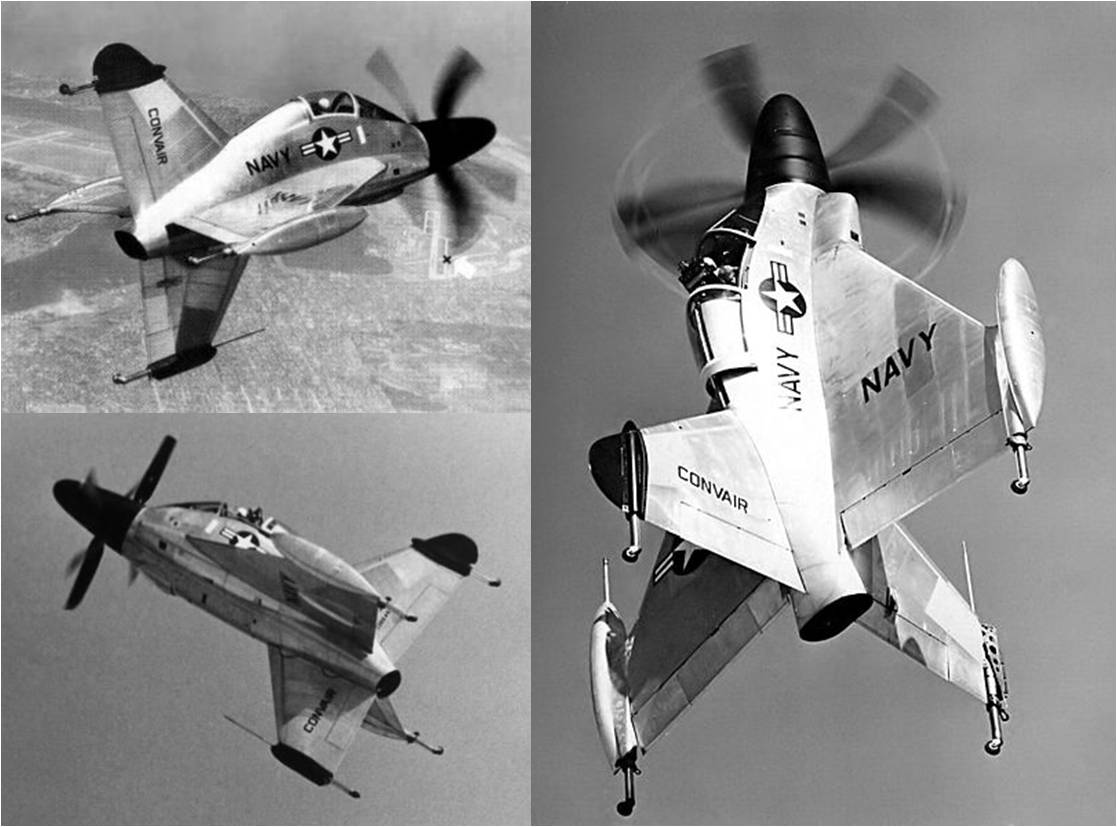
Fifty-six years ago this week, the USN/Convair XFY-1 became the first Vertical Take-Off and Landing (VTOL) aircraft to successfully transition from vertical to horizontal flight. The historic flight was piloted by famed Convair engineering test pilot James F. “Skeets” Coleman.
Motivated by World War II lessons-learned, the United States Navy began contemplating the feasibility of using VTOL aircraft for fleet defense in 1947. A VTOL aircraft would combine the vertical take-off and landing capabilities of a helicopter with the speed and agility of a fighter. The operational advantage and flexibility derived from basing such an aircraft on non-aircraft carrier naval vessels were powerful allurements indeed.
In May of 1951, the Navy awarded contracts to Lockheed and Convair to develop and flight test an experimental VTOL aircraft. The Lockheed offering was designated as the XFV-1 while Convair’s version became known as the XFY-1. Both companies were to produce two (2) test aircraft each. History records that each company would ultimately produce just a single copy of its respective prototype.
Convair nicknamed its VTOL aircraft Pogo after the Pogo Stick jumping toy popularized by an earlier generation of American youth. Such appellation referred to the XFY-1’s tendency to bounce on its quartet of shock-absorbered landing gear at touchdown. The similarity to one bouncing up and down on a spring-loaded Pogo Stick is obvious.
The XFY-1 Pogo measured 35 feet in length and had a wing span of nearly 29 feet. The type had a GTOW of 16,250 lbs and an empty weight of 11,750 lbs. Power was provided by a 5,500 hp Allison YT-40 turboprop which drove twin, 3-blade, 16-foot diameter contra-rotating propellers. This propulsion system produced a maximum thrust of 17,000 lbs.
The Pogo was difficult to fly vertically in close proximity to the ground. Prop-wash interaction with the aircraft and ground plane being the chief culprit. Even more difficult was the transition from vertical to horizontal flight and back again. It was particularly challenging to land the aircraft as the pilot had to look over his shoulder and “back down” to a landing.
The XFY-1 pilot sat in a seat that rotated to accommodate vertical and horizontal flight attitudes as appropriate. Pilot cockpit entry was via a 25-foot auxiliary ladder. Interestingly, the pilot was provided with a 25-foot rope for emergency egress during ground operations.
James F. “Skeets” Coleman was Convair’s project test pilot for XFY-1 flight tests. Coleman began tethered flight testing of the aircraft on Thursday, 29 April 1954 at NAS Moffett Field, California. Roughly 60 hours of tethered-flight testing took place within Moffett’s cavernous Hanger Number One. With a ceiling height of 195 feet, the building provided ample room for initial XFY-1 vertical flight testing.
On Sunday, 01 August 1954, Coleman made the first untethered XFY-1 flight test in the vertical. Following several more successful vertical take-off and landing trials, XFY-1 flight test activities were transferred to NAS Brown Field near San Diego, California. There, Coleman intently practiced (making 70 flights overall) in anticipation of the first attempt to transition the XFY-1 from vertical to horizontal flight.
On Tuesday, 02 November 1954, with Skeets Coleman at the controls, the XFY-1 lifted-off in the vertical from Brown Field. Coleman then carefully and skillfully transitioned the XFY-1 to horizontal flight for the first time. In 21 minutes of horizontal flight, Coleman put the nimble XFY-1 through its paces. The Pogo’s big Allison turboprop had power to spare as Coleman hit airspeeds well in excess of 300 mph.
When it was finally time to land the XFY-1, Coleman made a low altitude, minimum power approach and pulled into the vertical. As the aircraft quickly ascended, the airspeed bled-off just as rapidly. Near the top of the climb, Coleman advanced the throttle. The XFY-1 hung in the cool autumn air on the thrust of its twin props alone. The pilot then carefully descended from about 1,000 feet AGL and landed uneventfully.
Skeets Coleman made many more flights in which he demonstrated the Pogo’s VTOL capabilities. However, USN interest in the VTOL concept in general and the XFY-1 aircraft in particular began to wane. While the XFY-1 had indeed demonstrated the feasibility of VTOL flight, it also revealed the operational impracticality of such given the technology of the time.
The Achilles Heel of the Convair XFY-1 VTOL aircraft was the vertical landing phase. The pilot just could not judge rate-of-descent accurately. This was attributed partly to the fact that he had to look over his shoulder throughout the descent. In addition, XFY-1 throttle-induced lateral-directional handling qualities were poor and forced the pilot to work very hard at landing the aircraft even in low-wind conditions.
Skeets Coleman made the last flight of the XFY-1 experimental aircraft on Thursday, 16 June 1955. For his significant piloting efforts in successfully demonstrating the feasibility of the VTOL concept, he received the 1954 Harmon Trophy. The lone Convair XFY-1 Pogo test aircraft survived the flight test program and is currently held in the historical collection of the National Air and Space Museum.
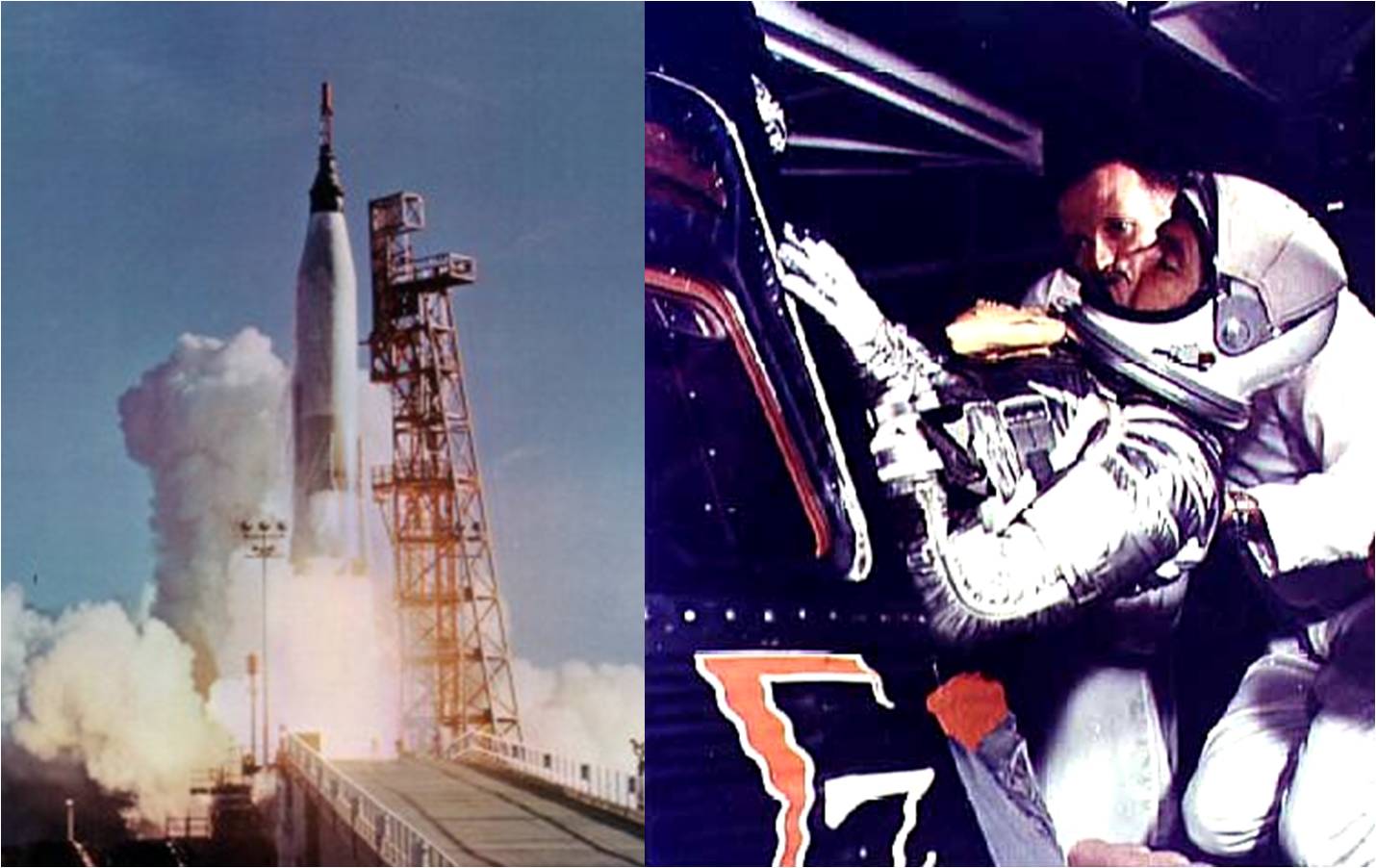
Forty-eight years ago this month, Mercury Astronaut Walter M. Schirra, Jr. orbited the Earth six (6) times in his Mercury spacecraft code-named Sigma 7. The near-perfect 9-hour spaceflight was the United States’ third manned orbital mission flown within a period of eight (8) months.
Project Mercury was United States’ first manned spaceflight program. This historic pioneering space effort helped lay the foundation for America’s quest for the Moon. A total of six (6) missions (2 sub-orbital and 4 orbital) was flown between May of 1961 and May of 1963.
The Mercury Spacecraft measured 11.5 feet in length and had a diameter of 6.2 feet. Orbital weight was roughly 3,000 pounds. With a cockpit volume of only 60 cubic feet, an astronaut’s corporeal fit inside the spacecraft was exceedingly tight. Vehicle entry and egress was a real shoe-horning process. It is not complete hyperbole to say that, once inside, an astronaut wore, more than rode in, the Mercury space vehicle.
Despite its dimunitive size, the Mercury Spacecraft was an able spacefaring ship. Indeed, it was configured with a complete suite of life support, navigation, attitude control, communications, deboost, recovery and thermal protection systems. Aided by a vast national mission support team, recovery force, and world-wide tracking system, the Mercury spaceflight effort was entirely successful in establishing America in space.
America’s first astronauts were known as the Mercury Seven. History records their names; Shepard, Grissom, Glenn, Carpenter, Schirra, Cooper and Slayton. In the tense 1960’s Space Race with the Soviet Union, these men were indeed America’s Single-Combat Warriors immortalized by writer Tom Wolfe in his classic, The Right Stuff.
Mercury-Atlas No. 8 (MA-8) was the fifth Mercury mission. Whereas the two (2) previous flights had been three (3) orbit missions, MA-8 was scheduled to orbit the Earth six (6) times. The focus would be on spacecraft operations instead of space science. The intent was to verify that the Mercury spacecraft could be cleared for an orbital mission duration of at least 24 hours on the very next flight
As was the custom for a Mercury astronaut, Schirra personally named his orbital steed. As such, Schirra chose the name Sigma 7. The term Sigma, the Greek mathematical symbol for summation, signified a summation or culmination of flight experience and engineering development that led to a mature Mercury Spacecraft system. The numeral 7 represented the Mercury Seven.
The MA-8 mission began with lift-off from Cape Canaveral’s LC-14 at 12:15:12 UTC on Wednesday, 03 October 1962. The Atlas D launch vehicle placed Schirra into a 152.8-nm x 86.9-nm orbit. Once in orbit, Schirra quickly got down to business. This included tracking the Atlas booster, maneuvering the spacecraft, observing and photographing the Earth, and conducting various scientific experiments.
Schirra did a particularly good job at conserving the precious supply of Reaction Control System (RCS) fuel. One of the MA-8 objectives had been to do so. In fact, Schirra conserved fuel even more efficiently than planned. Other than an annoying and uncomfortable spacesuit heating problem that occurred several times, the entire MA-8 mission was what Schirra would ultimately call “textbook”.
MA-8 retro-fire occurred at 21:07:12 UTC. During the reentry, the automatic rate stabilization system damped spacecraft pitch and yaw oscillations. Drogue and main parachute deployment took place at 40,000 feet and 15,000 feet, respectively. Splashdown in the Pacific Ocean occurred 1,200 nm northwest of Hawaii at 21:28:22 UTC.
The success of MA-8 paved the way to Gordon Cooper’s historic 22-orbit, 34-hour MA-9 mission in May of 1963. The Gemini and Apollo Programs would soon follow. Wally Schirra would play a big part in both. He commanded the historic Gemini 6 orbital rendezvous mission in December of 1965. Schirra also went on to command the critical Apollo 7 mission in October of 1968.
Wally Schirra was the only member of the Mercury Seven to orbit the Earth in Mercury, Gemini and Apollo spacecraft.











